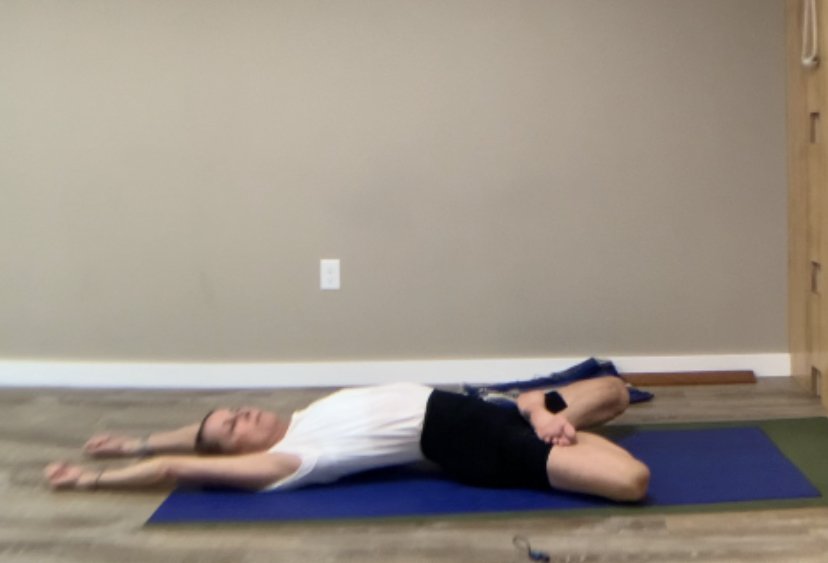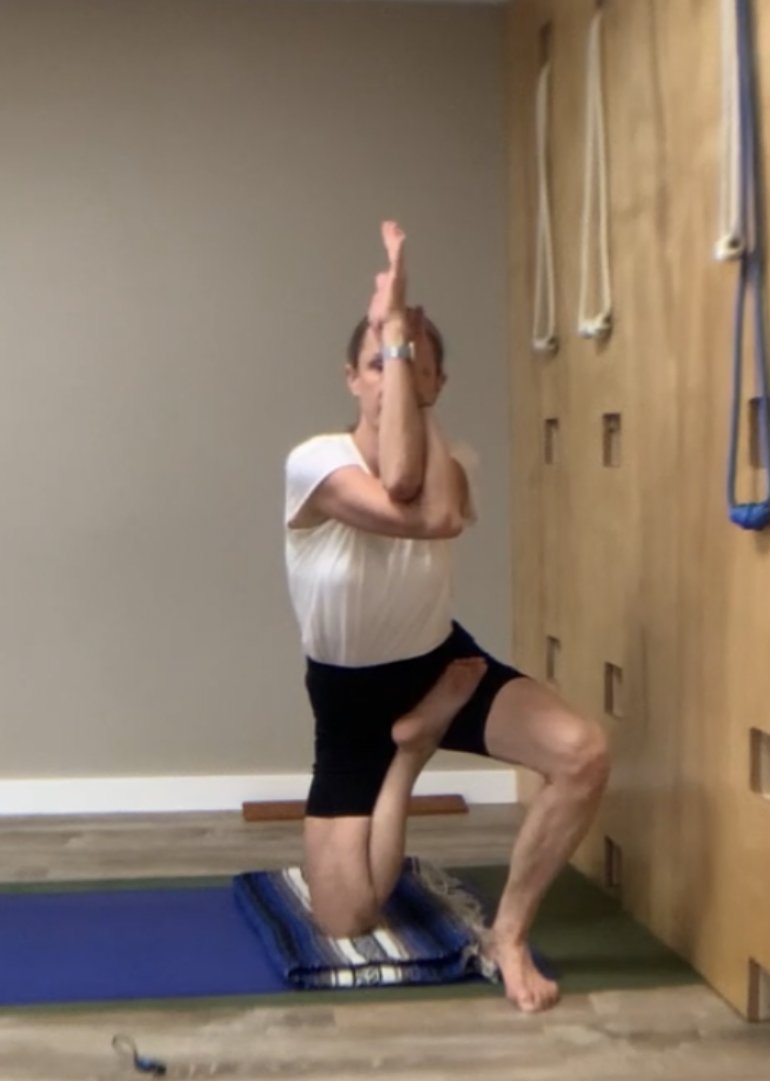I know I issued a 28 day challenge for you to practice something every day, but I want to give you a little more guidance.
I had posted a routine that I work with that works the legs in different ranges of motion. I don’t always follow that exact routine, rather I use it as a jumping off point for practice. I start with the first pose: Supta Padangusthasana and then I see where that takes me. I never practice the same thing twice.
But some of the comments I have received from students has me worried that they are practicing the same pose every day.
Practicing one pose every day can actually lead to injury, especially if there is something wrong in your alignment or the actions you are doing in the pose.
Let me offer and example. I had lost some ability in deep hip flexion due to back pain and I was eager to improve my flexibility after the pain had subsided. I decided to offer a 30 day Lizard Lunge practice to my students with the ulterior motive that I would improve my ability to do Lizard Lunge. I showed up on Facebook every day for 30 days to lead a class using Lizard Lunge as a base pose.
At the end of 30 days, I did not notice any improvement in my Lizard Lunge and, in fact, I felt some hip pain while doing it. I was glad when the 30 days were over.
I really haven’t done any Lizard Lunge since then but, miracle of miracles, my Lizard Lunge has improved tremendously.
WHAT?!
Most of us have some asymmetry in our bodies. We also have unconscious tendencies and the samskaras of repeated patterns and habits. We are often blind to these movements. By repeatedly performing these same actions over and over we are actually practicing them and reinforcing them.
Let me give another example. I have been trying for years to do a pose called Matsyasana:
But my pose looked like this:
It didn’t seem to matter how much I practiced it, I could not get my legs to the floor.
Then one day I was practicing Matsyasana in class as preparation for a harder pose called Vatayanasana:
When I finished, I had an urge to do Matsyanasana again and to my great surprise, I could do the pose.
The idea is that you may not know what effect other poses may have on opening up your body, so you have to play with all of them.
Geeta Iyengar said that no category of poses should be avoided. And, we usually tend to avoid certain groups of poses. (I know I do.) They may very well be the group of poses, or set of actions that we really need.
Plus when we fall into a routine of doing one thing, we become desensitized to it and the mind tends to drift off and not be present.
What I have found is that it is much better to rotate through a series of different actions and movements. In this way, you are working the pose from all of the different angles.
For example, if a muscle is tight, the tendency is to want to stretch it. But a tight muscle is often a weak muscle, so strengthening it may produce more flexibility.
Another example is that a lot of people want to stretch their hamstrings more. But overstretching the hamstrings can lead to hamstring injury. I would recommend mixing up working on stretching the hamstrings with strengthening postures through backward extensions. Also, if the hamstrings are tight chances are the adductors are tight as those two muscle groups are right next to each other in the thigh. Stretching and strengthening the adductors can benefit the flexibility of the hamstrings.
My recommendation for a good challenge is to pick a different pose or action for every day of the week and rotate through them. Then each time you circle back through the sequence again, notice what has changed.
For example, if you are looking to improve your shoulder flexibility, don’t neglect opening your hips. Tight hips and tight shoulders are related.
If you have tight shoulders your nighttime routine might consist of a rotating schedule that looks like this:
Day 1: Supported Chest openers and Urdhva Mukha Svanasana
Day 2: Gomukhasana and Garudasana arm work
Day 3: Quad stretching, Supta Virasana and Ustrasana
Day 4: Baddha Konasana, Upavishta Konasana and Padmasana
Day 5: Side Plank, Reverse Plank and Adho Mukha Svanasana
Day 6: Parsvottanasana with hands in Pascima Namaskarasana
Day 7: Virasana, Garudasana and Gomukhasana leg work
I’ll make some short videos of these practices and put the links in this document to inspire you.




